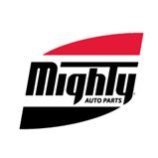-
Welcome to Auto Parts Forum
Whether you are a veteran automotive parts guru or just someone looking for some quick auto parts advice, register today and start a new topic in our forum. Registration is free and you can even sign up with social network platforms such as Facebook, X, and LinkedIn.
TROUBLESHOOTING PERFORMANCE ISSUES: Chemicals May Provide the Cure
-
Similar Topics
-
By Counterman
Although hybrids have been around for more than 20 years, many shops are not familiar with the risks of high-voltage vehicles or are not comfortable working on or around them. To address this concern, the National Institute for
link hidden, please login to view (ASE) said it is offering a testing and certification program for electrified propulsion vehicle (xEV) high-voltage safety, including light-duty and medium-/heavy-duty hybrid and electric vehicles. This industry-developed program provides two options to certify shop personnel based on their involvement with xEVs. Industry standards accompany both certifications and are intended to be used in conjunction with high-voltage vehicle safety training. Training managers have found that technicians who have attained xEV certification have increased confidence and lower anxiety while working on hybrid and electric vehicles.
The test can be completed online, ASE said. Once the test is passed, the test-taker receives an electronic credential and a certificate that can be downloaded and printed for display.
The xEV Electrical Safety Awareness Certification (Level One) certification is designed for anyone who may encounter xEV in the workplace, including individuals who perform tasks near electric-powered vehicles, such as sales, service, repair and support, ASE said. Level One individuals require high-voltage electrical safety awareness to identify the hazards and reduce the associated risks when working on or near xEVs or near high-voltage components of electrified propulsion vehicles.
Skills performed by Level One individuals may include: operating (driving) a hybrid or electric propulsion vehicle; performing maintenance and repairs not related to high-voltage systems or their components; handling non-high-voltage components of electrified propulsion vehicles and working near electric-powered vehicles or high-voltage components of electrified propulsion vehicles.
The xEV Technician Electrical Safety Certification (Level Two) certification is for those service professionals, technicians or specialists who have received high-voltage electrical training; have demonstrated skills and knowledge related to the construction, operation and repair of electrically powered high-voltage vehicles; maintain an electrically safe working area and use required personal protective equipment. They have also received safety training to identify the hazards and reduce the associated risk.
Skills performed by Level Two repair professionals may include: evaluating and classifying the condition of the high-voltage battery and high-voltage electrical system; isolating the voltage from the high-voltage systems and checking the isolation from the supply; securing the high-voltage system against being activated; re-starting the high voltage system; performing general work on de-energized high-voltage systems and components and assessing the risk of high-voltage vehicles that were involved in an accident.
“Today, shops must consider the exposure and liability related to servicing hybrid and electric vehicles,” Dave Johnson, ASE president and CEO, said. “The ASE xEV certifications should be a critical component of a shop’s high voltage safety training. The standards were developed to keep shop personnel safe and earning the credentials is a great way for shops to showcase the ability of their knowledgeable staff to work on high voltage vehicles.”
The post
link hidden, please login to view appeared first on link hidden, please login to view.
link hidden, please login to view -
By Mighty Auto Parts
The post
link hidden, please login to view appeared first on link hidden, please login to view. Nothing is more frustrating for the vehicle owner than a puddle of oil on their carport fl oor or the stench of oil on a hot engine or exhaust system following a lube service. It is equally frustrating for the lube shop asthey must correct the problem, losing billable labor time. We have seen customers […]
The post
link hidden, please login to view appeared first on link hidden, please login to view.
link hidden, please login to view -
By Mighty Auto Parts
The post
link hidden, please login to view appeared first on link hidden, please login to view. When diagnosing engine performance complaints such as misfire symptoms, be advised that several systems and components can contribute to those symptoms. When considering single or multiple misfire codes, some checks may seem farfetched but trust me if not all are considered the symptoms can elude the most experienced technician, resulting in a misdiagnosis. When this […]
The post
link hidden, please login to view appeared first on link hidden, please login to view.
link hidden, please login to view -
By Daysyore
The catalytic converter is a critical component in modern vehicles that plays a crucial role in reducing harmful emissions. This device, typically located in the exhaust system, helps convert toxic pollutants from the engine's exhaust gases into less harmful substances. While catalytic converters have been instrumental in improving air quality and meeting emission standards, they have also become a hot topic of discussion due to their environmental impact, cost, and potential for theft. In this article, we will explore the significance of catalytic converters, their environmental benefits, challenges faced, and potential future developments.
Environmental Benefits:
Catalytic converters have made significant contributions to reducing air pollution and improving overall environmental quality. They primarily work by facilitating chemical reactions that convert harmful pollutants into less harmful compounds. Key environmental benefits include:
1. Emission Reduction: Catalytic converters effectively reduce emissions of harmful pollutants such as carbon monoxide (CO), nitrogen oxides (NOx), and unburned hydrocarbons (HC). These pollutants contribute to smog formation, respiratory issues, and environmental degradation.
2. Compliance with Regulations: Catalytic converters enable vehicles to meet stringent emission regulations imposed by governments worldwide. These regulations aim to mitigate the adverse effects of vehicle emissions on public health and the environment.
Challenges and Concerns:
Despite their environmental benefits, catalytic converters face several challenges and concerns:
1. Precious Metal Usage: Catalytic converters contain precious metals like platinum, palladium, and rhodium, which act as catalysts. The extraction and mining of these metals can have negative environmental impacts, including habitat destruction and water pollution.
2. Cost and Maintenance: Catalytic converters are expensive components, and their replacement or repair can be financially burdensome for vehicle owners. Additionally, improper maintenance or the use of low-quality fuels can lead to premature failure or reduced effectiveness of the catalytic converter.
3. Theft: Catalytic converters contain valuable metals, making them a target for theft. Criminals often remove catalytic converters from vehicles due to their high resale value, leading to inconvenience and financial loss for vehicle owners.
Future Developments:
To address the challenges associated with catalytic converters, ongoing research and development efforts are focused on potential advancements:
1. Alternative Catalyst Materials: Scientists are exploring alternative catalyst materials that can reduce or eliminate the need for precious metals in catalytic converters. This could help mitigate environmental concerns related to metal extraction and lower production costs.
2. Improved Efficiency: Researchers are working on enhancing the efficiency of catalytic converters to further reduce emissions and improve fuel economy. Advancements in catalyst design and optimization of chemical reactions can contribute to more effective pollution control.
3. Anti-Theft Measures: Automotive manufacturers and law enforcement agencies are collaborating to develop anti-theft measures, such as tamper-resistant designs and identification technologies, to deter catalytic converter theft.
Conclusion:
The catalytic converter remains a vital component in the automotive industry's efforts to reduce harmful emissions and improve air quality. While it has made significant environmental contributions, challenges such as precious metal usage, cost, and theft persist. Ongoing research and development endeavors aim to address these concerns through alternative catalyst materials, improved efficiency, and anti-theft measures. As technology advances, striking a balance between environmental impact, automotive performance, and affordability will be crucial in shaping the future of catalytic converters and sustainable transportation.
-
By shelitaauto
Source: Gasgoo
URL:
link hidden, please login to view According to foreign media reports, the Australian Federal Automobile Industry Chamber of Commerce released automobile sales data in May, the month of new car sales in Australia hit a record high. Sales of hybrid vehicles doubled year on year to reach 15.8 percent of the market, compared with a 0.4 percent increase in electric vehicle sales.
Almost one in every four new cars in Australia is currently a low-emission vehicle, so hybrid and electric vehicles are taking a greater share of the market. Meanwhile, Australians’ love affair with larger cars is still on the rise, with SUVs still dominating and ute sales continuing to grow.
This trend has more than doubled the popularity of hybrid cars in 2024, with more than 66,000 units sold, compared to less than 30,000 in the same period in 2023.
Electric vehicle sales also increased in Australia in May, with more than 8,900 units sold, accounting for 8.1 per cent of all new car sales, with more than 40,000 new electric vehicles on the road in Australia in the first five months of the year.
Tony Weber, the chamber’s chief executive, said the auto industry is working hard to meet the needs of drivers. “The continued growth in vehicle sales underscores consumer confidence and demonstrates the industry’s ability to meet the diverse needs of Australian consumers in the face of the current economic challenges,” he said.
However, large vehicles remain a popular choice for drivers regardless of fuel consumption, with SUVs accounting for more than half of vehicles sold and light commercial vehicles accounting for 22 percent of new vehicles. UTE also took three of the top five best-selling cars in May, with the Ford Ranger taking the top spot, followed by the Toyota Hilux and Isuzu’s D-Max light truck in fourth place.
Image source: Ford
Toyota was again the top-selling car manufacturer in Australia for the month, followed by Ford, Mazda, Kia and Hyundai. The data also showed a drop in sales for electric car leader Tesla, with the US company selling 3,567 vehicles in Australia in May, compared with 4,476 in the same month last year.
Its main electric car rival BYD, however, saw sales climb, with the Chinese company selling 1,914 electric vehicles in the month, up 32 percent from a year earlier.
The growing sales of electric and hybrid vehicles come ahead of the introduction in January of Australia’s first fuel efficiency standard, a legal standard that will set emissions limits on carmakers’ fleets of passenger cars, large and commercial vehicles in an attempt to reduce transport emissions by 2030.
-




Recommended Posts
Join the conversation
You can post now and register later. If you have an account, sign in now to post with your account.
Note: Your post will require moderator approval before it will be visible.